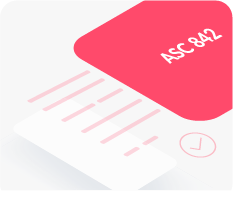Knowing the difference between lessors and lessees can significantly impact how you handle lease contracts, financial reporting, and compliance with various accounting standards. Let’s break down the differences, explore each party’s responsibilities, and examine key compliance requirements like ASC 842, GASB 87, and IFRS 16.
Defining the lessor and the lessee
Think of a lease agreement as a rental relationship. The lessor is like a landlord who owns an asset, such as property, equipment, or vehicles. They grant the right to use this asset to another party—the lessee—in exchange for regular payments. In essence, the lessor provides the asset and collects rental income.
On the other hand, the lessee is like a tenant who gets to use the asset for a specified period, making regular payments to the lessor according to the lease terms. Examples of lessees include businesses renting office space, companies leasing machinery, and individuals leasing vehicles. This rental relationship benefits both parties: the lessor generates income from the asset, while the lessee gains access to necessary resources without the full cost of ownership.
Responsibilities of lessors and lessees
Lessor responsibilities:
- Asset maintenance: Ensuring the leased asset or space is in good condition and meets the agreed-upon standards.
- Compliance: Adhering to accounting and financial reporting standards, such as ASC 842, GASB 87, or IFRS 16.
- Collection of payments: Managing lease payments and handling any payment issues.
- Asset recovery: If the lessee does not purchase the asset, it is reclaimed at the end of the lease term.
Lessee responsibilities:
- Timely payments: Make regular lease payments as specified in the lease agreement.
- Asset care: Using the asset responsibly and maintaining it according to the lease terms.
- Compliance: Ensuring that lease obligations and disclosures are accurately reported in financial statements as per relevant accounting standards.
- End-of-lease decisions: Deciding whether to return, renew, or purchase the asset at the end of the lease term.
Key compliance standards: ASC 842, GASB 87, and IFRS 16
ASC 842 for lessors and lessees
Implemented by the Financial Accounting Standards Board (FASB), ASC 842 is applicable to entities following Generally Accepted Accounting Principles (GAAP) in the United States. Key points include:
- Lessee accounting: Lessees must recognize most leases on the balance sheet, recording a right-of-use asset and a corresponding lease liability. There are two distinct accounting models for capitalization and amortization, one for finance lease and another for operating leases.
- Lessor accounting: Lessors continue to classify leases as operating, sales-type, or direct financing leases, recognizing lease income accordingly.
- Disclosure requirements: Both lessors and lessees must provide detailed disclosures about their lease transactions to improve transparency.
GASB 87 for lessors and lessees
GASB 87 applies to United States government and other not-for-profit entities. This standard aims to enhance the consistency and comparability of lease reporting. Key points include:
- Unified model: GASB 87 requires a single approach to accounting for leases, eliminating the distinction between operating and capital leases for lessees barring purely short-term contracts.
- Lessee accounting: Lessees must recognize a lease liability and a right-to-use lease asset on their balance sheet.
- Lessor accounting: Lessors must recognize a lease receivable and a deferred inflow of resources. The lease receivable accretes interest over the life of the lease and is depleted as the payments are received. The deferred inflow of resources is amortized as income over the lease term.
IFRS 16 for lessors and lessees
Implemented by the International Accounting Standards Board (IASB), IFRS 16 is applicable globally to entities following IFRS. Key points include:
- Lessee accounting: Lessees must recognize all leases (except short term and low-value leases) on the balance sheet, similar to ASC 842 accounting for finance leases, by recording a right-of-use asset and a lease liability. As such, it uses a single accounting model, unlike ASC 842.
- Lessor accounting: Lessors continue to classify leases as operating or finance leases, with recognition and measurement similar to the previous standard, IAS 17.
- Enhanced disclosures: Both lessors and lessees must provide comprehensive disclosures to give users of financial statements a better understanding of lease transactions.
Maintaining lease accounting compliance
For lessors:
- Financial reporting: Accurate classification and measurement of lease income and assets are essential for compliance and financial transparency.
- Lease structuring: Understanding these standards helps lessors structure leases in a way that aligns with their financial objectives of both the lessor and lessee, and compliance requirements.
- Technology integration: Leveraging lease management software can streamline compliance, improve accuracy, and reduce administrative burden.
For lessees:
- Balance sheet impact: Recognizing leases on the balance sheet may impact financial ratios, which could impact lending and investment decisions.
- Budgeting and forecasting: Accurate lease accounting helps with better budgeting and forecasting, leading to more informed financial planning and investment decions.
- Enhanced control: Implementing robust lease management practices ensures that lessees remain compliant and can respond effectively to changes in lease terms or regulatory requirements.
Getting help with EZLease
Understanding the roles of lessors and lessees, as well as complying with relevant accounting standards, is important for effective lease management. By staying informed about ASC 842, GASB 87, and IFRS 16, both lessors and lessees can ensure transparency, maintain financial health, and avoid potential compliance pitfalls.
If you need to streamline your lease accounting processes and ensure compliance with these standards, consider a free trial of EZLease. Our comprehensive solutions can help you manage your leases seamlessly, reduce administrative burdens, and simplify your financial reporting.




